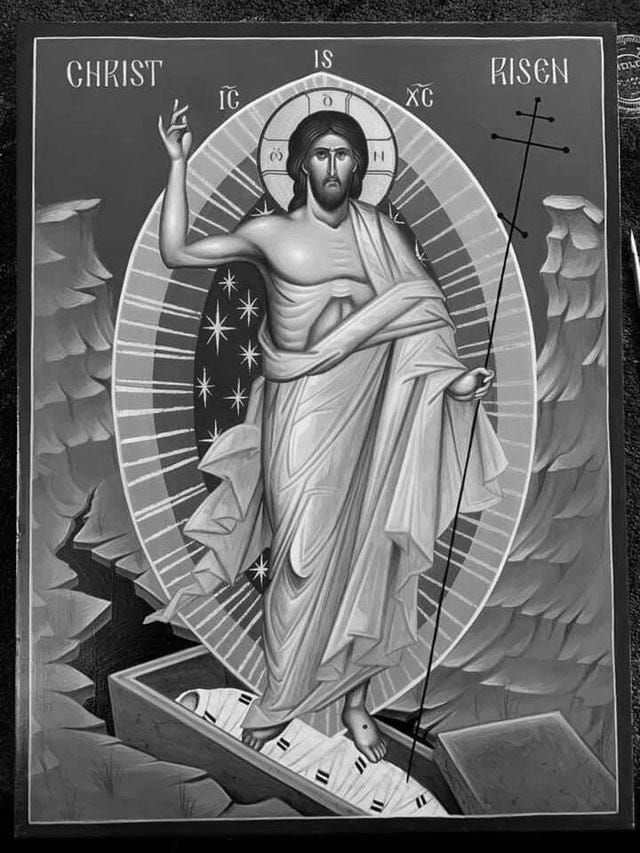Christ, the God-Man, Illuminates The Abyss
So that they are without excuse, because, although they knew God, they did not glorify Him as God, nor were thankful, but became futile in their thoughts, and their foolish hearts were darkened.
A month or so ago, I posted on Twitter this Icon of Christ risen. For me, it generates awe, humility, and respect. Its symbolism can be read. Christ has risen from the dead, from the coffin, having discarded the funeral wraps; he carries a symbol of the cross to show he was crucified, but it is also a standard. He demonstrates the spear wound in his rib…
Keep reading with a 7-day free trial
Subscribe to On The Settled Questions to keep reading this post and get 7 days of free access to the full post archives.



